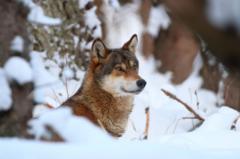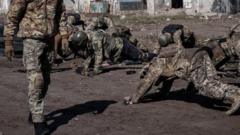As numbers soar, the potential for culls raises concerns among environmentalists, shepherds, and wildlife advocates alike.
Wolves in Europe Face Potential Culling as Protection Eases

Wolves in Europe Face Potential Culling as Protection Eases
The European Commission's proposal could lead to the removal of long-standing safeguards for wolves, igniting a debate on wildlife management in the region.
A European Commission initiative may strip grey wolves of their protections in Europe, potentially opening the door for culls as populations rise. In Sansimion, Romania, shepherd József Rácz tends to his flock of 500 ewes on the windswept pastures of the Carpathian mountains. Rácz's life as a shepherd is fraught with worries; not only is he concerned about the daily tasks of milking and managing his sheep, but he also faces the persistent threat of predators like wolves and bears. Despite his efforts, he loses five to six sheep each year to these wild animals, prompting him to rely on a team of 17 protective dogs.
The Commission's proposal to transition wolves from Annex II, which offers strict protection, to Annex III, where they would merely be "protected," could significantly alter the landscape of wolf conservation. If this change materializes, individual EU nations would have the authority to establish quotas for wolf killings, raising alarms among environmentalists. The Commission claims wolf populations in Europe have nearly doubled since 2012, now surpassing 20,000, and blames them for livestock damage.
However, wildlife advocates argue that enhanced protection measures, like using trained sheep dogs, would be more effective than resorting to culling. They emphasize that wolves play a critical ecological role by controlling deer and wild boar populations, which, unchecked, can destroy forests and crops and transmit diseases. For instance, biologist Michal Haring points out that wolves help mitigate the spread of African swine fever, as they don’t catch it, making them vital to maintaining a healthy ecosystem.
Moreover, recent studies indicate that the number of sheep affected by wolf attacks constitutes only a tiny fraction of Europe’s livestock—around 0.065%. Additionally, there have been no recorded fatal wolf attacks on humans in four decades. Advocates for wolf conservation argue that if rich nations such as European countries can demand protections for and coexist with iconic species worldwide, they should similarly safeguard their own wildlife.
Returning to Rácz, he expresses a more urgent sentiment, reflecting on the cleverness of wolves and the devastating impact a single attack can have on his flock. While he understands the ecological importance of wolves, his personal experiences drive him to favor more stringent measures to control their numbers, especially after losing his loyal dog, Moody, to a wolf attack in broad daylight. As wolves proliferate in the area, Rácz fears the risk to his sheep will only heighten, underlining the ongoing conflict between conservation efforts and agricultural needs in Europe.





















